Horning |
|
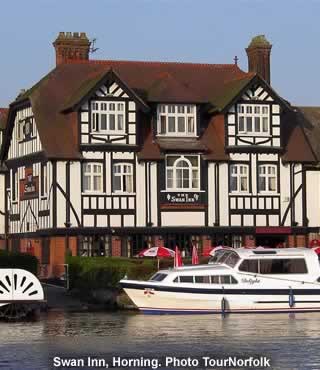 |
|||
Britain > Norfolk Broads > Horning |
|||||||
A picturesque waterside village looking pretty much the same as it did during the 1930's |
|||||||
Listen to this article |
|||||||
|
|||||||
Horning is a picturesque waterside village, lining the northern bank of the River Bure, stretching for about a mile, and has many waterside properties, which are best viewed by boat. |
|||||||
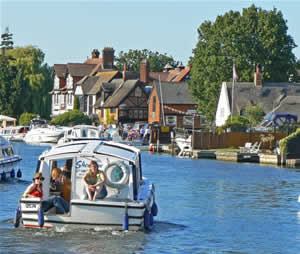 Cruising through Horning |
|||||||
Horning was once called Horningham and means the "folk who live on the high ground between the rivers". Its history dates back to 1020 when the manor was given by King Canute to the newly founded Abbey of St Benet. In 1642 Horning was sold to a London merchant, who felled 400 acres of oak woodland, known as Horning Great Wood. In 1658 Horning was sold again, this time to a London haberdasher. In 1660 came the Restoration of the monarchy and the Bishop took control. To this the day, the Bishop of Norwich as Abbot of St. Benet's is still Lord of the Manor. |
|||||||
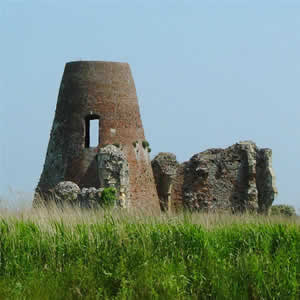 St Benet's Abbey near Horning |
|||||||
|
|||||||
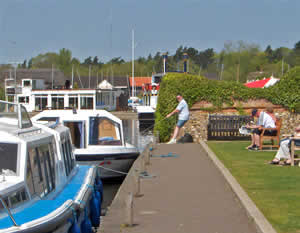 Mooring at Horning Staithe |
|||||||
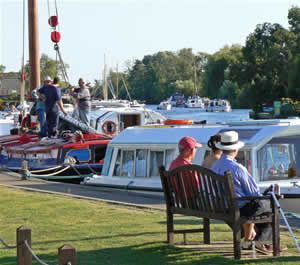 The view over Horning Staithe |
|||||||
Picturesque Lower Street runs parallel to the river and contains some lovely shops and restaurants. Little has changed over the years with the village looking very similar to its own pictures back in the 1930's. |
|||||||
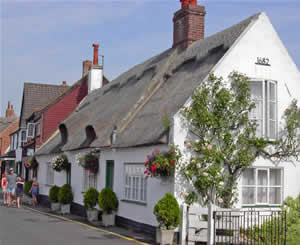 Horning's Lower Street |
|||||||
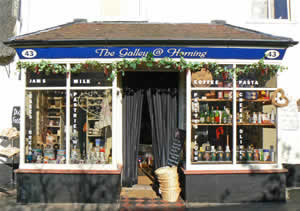 The Galley @ Horning, a delicatessen |
|||||||
The village of Horning extends along the River Bure for about a mile to Horning Ferry, consisting of a boat marina, small leisure centre and the 3rd of Horning's riverside pubs - the famous Ferry Inn. The original Inn was built around 1840 on the site of a mead house which belonged to monks from St. Benets Abbey. The pub had to be rebuilt after it took a direct hit from a German bomb on 26th April 1941. 22 people were killed in the attack as they stood drinking at the bar; some were RAF fighter pilots from nearby RAF Coltishall. Today the pub has plenty of moorings, riverside gardens and a games room. The name ferry comes from an ancient foot ferry that has been operating for hundreds of years, allowing pedestrians to cross the river, a service that still operates to this day. |
|||||||
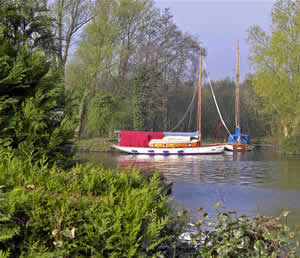 Glimpes of the River Bure as you walk along Lower Street to Horning Ferry |
|||||||
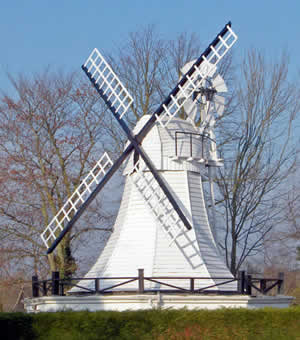 Unusual buildings line the riverbank, including this fake windmill |
|||||||
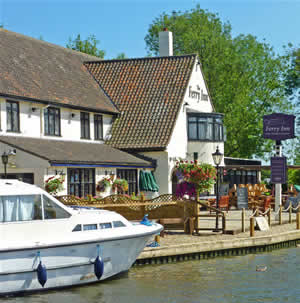 Moored up outside the Horning Ferry |
|||||||
|
|||||||
A short cruise from Horning is the parish church of St. Benedict. Situated on a bend in the River Bure, it has a small staithe, allowing you to tie up and visit the church. The church dates from around 1220. The earliest parts of the building are the priest's door in the Chancel and the pillars in the wall on the north side of the Nave. Inside the church you will find a 14th century lead lined Baptismal font, interesting carvings on the Choir Stalls and four Coats of Arms which relate to the history of the church. Around the side of the Church is a path that leads to a small staithe on the River Bure, belonging to the Church. Its a great quiet spot to just sit and watch everybody else cruise by! |
|||||||
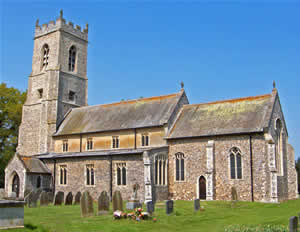 Horning Parish Church |
|||||||
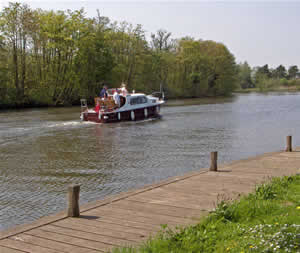 Cruising along the River Bure, past Horning church staithe |
|||||||
|
|||||||
Car-parking can be found near to the Swan Inn (paid) or adjacent to the Village Hall (free). There is also a car-park adjacent to the church. |
|||||||
|
Pocket Britain is optimised for use on a smartphone or tablet with internet access. All content is subject to copyright. All reasonable methods have been used to ensure information supplied is accurate at the time of publication. However, it is advisable to check information before relying on it. Privacy Policy |